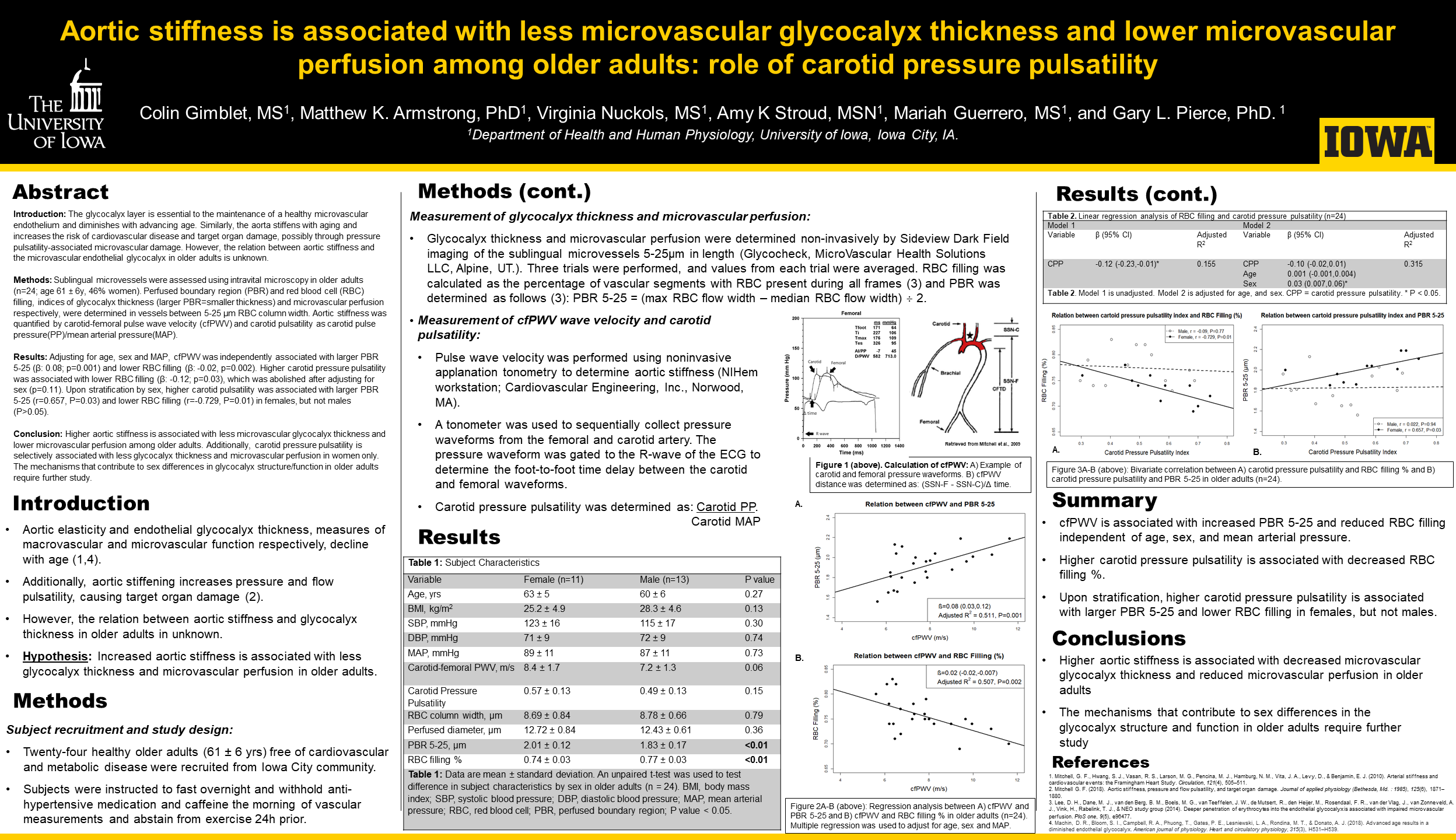
POSTER ABSTRACTS
Materials should NOT be shared with those that are not registered for the conference. Poster abstracts are not proofed for spelling and/or grammar errors.
The poster and/or other information contained on this website may NOT be downloaded and/or used without prior written permission from all authors on the project. If you would like to be connected with the author(s), please email [email protected].
Aortic stiffness is associated with less microvascular glycocalyx thickness and lower microvascular perfusion among older adults
Colin Gimblet, MS'24, Matthew K. Armstrong, PhD, Virginia Nuckols, MS, Amy K. Stroud, MSN, Mariah Guerrero, MS, and Gary L. Pierce, PhD
Department of Health and Human Physiology, University of Iowa, Iowa City, IA
Abstract
Introduction: The glycocalyx layer is essential to the maintenance of a healthy microvascular endothelium and diminishes with advancing age. Similarly, the aorta stiffens with aging and increases the risk of cardiovascular disease and target organ damage possibly through pressure pulsatility-associated microvascular damage. However, the relation between aortic stiffness and the microvascular endothelial glycocalyx in older adults is unknown.
Methods: Sublingual microvessels were assessed using intravital microscopy in older adults (n=23; age 61 ± 6y, 43% women). Perfused boundary region (PBR) and red blood cell (RBC) filling, indices of glycocalyx thickness (larger PBR=smaller thickness) and microvascular perfusion respectively, were determined in vessels between 5-25 µm RBC column width. Aortic stiffness was quantified by carotid-femoral pulse wave velocity (cfPWV) and carotid pulsatility as carotid pulse pressure/mean arterial pressure (MAP).
Results: Adjusting for age, sex and MAP, cfPWV was independently associated with larger PBR 5-25 (β: 0.087; p=0.001) and lower RBC filling (β: -0.019, p=0.001). Higher carotid pulsatility was associated with lower RBC filling (β: -0.120; p=0.04), which was abolished after adjusting for sex (p=0.07). Upon stratification by sex, higher carotid pulsatility was associated with larger PBR 5-25 (r=0.684, P=0.03) and lower RBC filling (r=-0.773, P=0.009) in females, but not males (P>0.05).
Conclusion: Higher aortic stiffness is associated with less microvascular glycocalyx thickness and lower microvascular perfusion among older adults. Additionally, carotid pressure pulsatility is selectively associated with less glycocalyx thickness and microvascular perfusion in women only. The mechanisms that contribute to sex differences in glycocalyx structure/function in older adults require further study.
Access PDF version to expand view.

